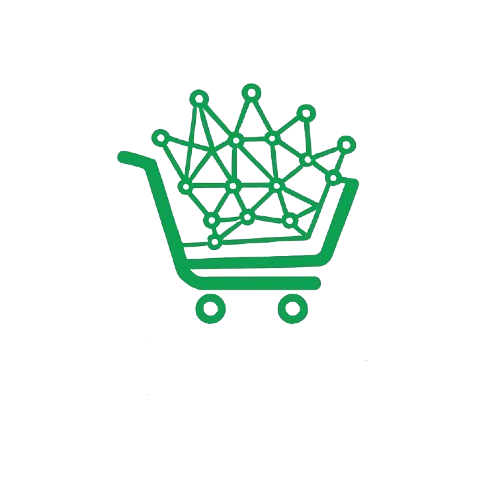

Trading has always been at the heart of financial markets. From noisy stock exchange floors filled with shouting brokers to sleek digital platforms powered by algorithms, the way humans trade has undergone a dramatic transformation. Understanding this journey is crucial to appreciating why algo trading is the future of investing.
In this comprehensive guide, we’ll explore how trading evolved through different eras, the rise of technology, and why algorithms now dominate the markets.
In the early days, trading happened in crowded exchange floors like the New York Stock Exchange (NYSE) or the Bombay Stock Exchange (BSE). Traders used a system called open outcry, shouting bids and offers and using hand signals to finalize deals.
While exciting and energetic, it had major drawbacks:
Slow execution.
Human errors.
Limited reach (only those physically present could trade).
In India, the iconic “ring” at BSE was where brokers gathered every day. Only members of the exchange could access it, making trading an exclusive club.
By the 1990s, technology began to change everything.
Electronic Terminals: Orders were entered on terminals and matched automatically.
Global Connectivity: Traders could access markets remotely.
Faster Execution: Trades that took minutes on the floor now took seconds.
In India, the National Stock Exchange (NSE) launched in 1992 as a fully electronic exchange. This was a turning point, democratizing market access for millions of new investors.
With the internet boom, trading shifted from physical terminals to websites and later to mobile apps.
Discount Brokers: Companies like Zerodha, Upstox, Angel One, and Groww made trading affordable and easy.
Retail Participation: Suddenly, anyone with a smartphone and internet connection could invest.
This era saw explosive growth in retail investors but still relied heavily on manual decision-making.
As markets got faster, manual trading showed its limitations:
Humans couldn’t process data quickly enough.
Emotions led to inconsistent results.
Institutions needed automation to scale.
Enter algo trading — the use of computer programs to execute trades automatically, based on predefined rules.
1970s: First use of computers for simple order execution.
1990s: Rise of electronic exchanges and program trading.
2000s: High-frequency trading (HFT) emerged on Wall Street.
2010s: Retail traders gained access via APIs and platforms.
2008: SEBI officially allowed algorithmic trading in India.
2010s: Brokers began offering API access.
2020s: Platforms like AlgoKart brought algo trading to retail investors at scale.
| Feature | Manual Trading | Algorithmic Trading |
|---|---|---|
| Speed | Seconds to minutes | Microseconds |
| Accuracy | Prone to human error | Rule-based precision |
| Emotions | Fear & greed impact decisions | 100% disciplined |
| Scalability | Can manage a few trades | Can manage hundreds simultaneously |
| Backtesting | Limited to memory or spreadsheets | Automated with historical data |
Clearly, algorithms provide an edge.
Imagine two traders in 2015:
Manual Trader: Watches charts, enters orders when they think the market will rise. Misses signals during lunch breaks.
Algo Trader: Programs a simple moving average crossover strategy. The system executes instantly when conditions are met.
Over a year, the algo trader captures more opportunities and avoids emotional mistakes, leading to more consistent results.
Does this mean humans are no longer needed? Not at all.
Humans design the strategies.
Algorithms handle execution.
Together, they create a powerful partnership.
Algo trading doesn’t replace traders — it empowers them.
In India, SEBI plays a crucial role:
Ensures fairness in access.
Prevents market manipulation.
Provides a framework for broker APIs.
This ensures that both institutions and retail traders can use algorithms responsibly.
The journey doesn’t stop here. The next phase will include:
AI & Machine Learning: Strategies that adapt automatically.
Blockchain & Smart Contracts: Transparent, decentralized trading.
Social Trading: Traders sharing, copying, and improving each other’s algos.
Full Integration: Direct links with tax, compliance, and financial planning tools.
Q: Will open outcry trading ever return?
No. The future is fully electronic.
Q: Is algo trading legal for retail traders in India?
Yes. SEBI regulates it strictly.
Q: Do I need to know coding?
Not necessarily. Platforms like AlgoKart allow no-code access.
Q: Are algorithms only for short-term traders?
No. Long-term investors can use them for portfolio rebalancing and tax optimization.
Trading evolved from floor shouting to mobile apps to algorithms.
NSE’s digital launch in 1992 and SEBI’s 2008 algo approval were game changers in India.
Manual trading has limitations, while algorithms bring speed, precision, and discipline.
The future will combine AI, automation, and social collaboration.
The evolution of trading shows a clear direction: more technology, more efficiency, and more accessibility. From the BSE ring to smartphones to AI-driven algos, trading has always adapted to innovation.
With AlgoKart, you can be part of the next phase — trading smarter, faster, and with confidence.
👉 Ready to upgrade your trading? Step into the future with AlgoKart today!